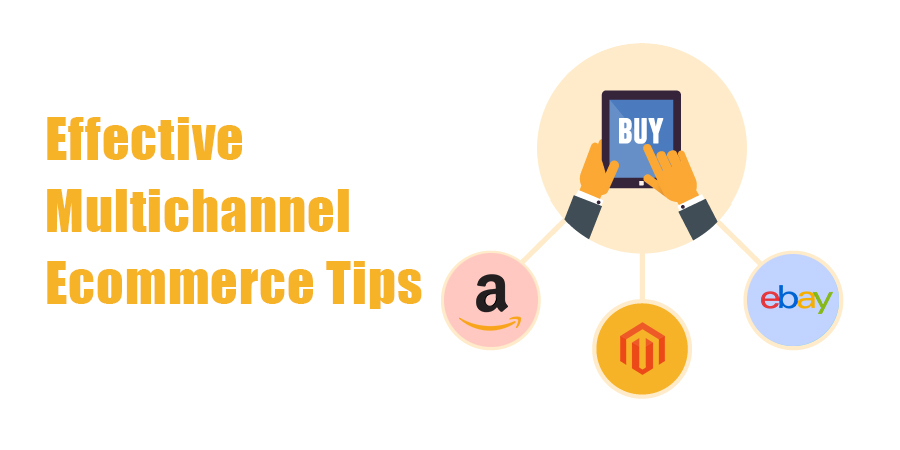[dropcap]M[/dropcap]ultichannel eCommerce is widely popular now a day because of increasing results of online shopping. But still many online sellers are wasting their money and time in just one source although they have well a planned eCommerce website. Efforts are put in SEO (Search Engine Optimisation) only, which no doubt is a great source for free and quality traffic, but there are many other sources are also available and one should not miss their advantages.
It is essential to understand how to start up Multi-Channel eCommerce for online business; you’ll have to know what type of eCommerce channels bring in.
Understand different eCommerce channels
- Direct Traffic – Many high rated channels receive traffic directly it includes URL navigation, email marketing, affiliate marketing and an easily remembered domain name.
- Paid Traffic – Paid traffic means buying traffic from the search engine (Google and Bing) on pay per click way. This technique is based on keywords, so you must have expert in creation and management of keywords and conversation rates.
- Comparison Shopping Engines (CSEs) – There are over hundreds of comparison shopping website with different verity of business models available at free of cost like Google Product Search and Bing, TheFind etc. You can also promote your products via CostPerClick (Nextag, Shopping.com, PriceGrabber, etc). You can use your Product page in CSEs for more conversation.
- Sale on Popular Marketplaces: Many popular marketplaces (Amazon, eBay, Play.com) allow you to sell your product on their website (not your website). Amazon is world’s largest marketplace while eBay is on second position. Other marketplace such as Etsy, Sears, Buy.com, etc can also lead to high exposure on online selling.
- mCommerce: The use of smart phones and tablets with responsive website and barcode-scanning applications has increased in online buying. We should not ignore the power of mCommerce as this will be the future.
- Social Media: One of the major revenue generating sources; you can spread your product information widely using social media. As Facebook and Twitter mature, they are also looking for commerce integration. You can increase conversation rate by using Facebook’s paid advertising.
Lessons to Learn from Multichannel eCommerce

Online shopping is increasing day by day, so this can be a wake-up call to those vendors not taking any advantage of multiple channels. Here are some of the top lessons retailers have learned from this.
- Free traffic: We all know that there is no such thing as free ride. eCommerce has been growing to 20-25% to compare last ten years while direct traffic is decreased. So don’t just pull your all efforts on SEO strategy when other channels including social media are providing important as well, don’t miss them.
- More channel more sales: Many more online sellers especially eCommerce website owner depends on one channel only when they have the opportunity to sell on world’s largest marketplaces. Concentrating on one channel only adds risk to your selling and means you are missing out on other important pieces of the overall eCommerce pie.
- Portfolio of eCommerce Channels: We suggest you build a portfolio of eCommerce channels because as per the current scenario most successful large online businesses use portfolio to minimize risk to their business and maximize sales. When you use this approach, you have some eCommerce marketplaces that are high profits, some that are lower profits, and some that drive customer gaining and others that are more about maintenance. At the end, some channels are best for one set of products and other channels may favour others. Advanced retailers source against the channel product partiality to help them continue to grow.
- Spreading the product everywhere: eCommerce is a widely popular game, meaning customers can come up from anywhere. If you are unable to spread your products strategically, you will lose opportunities and your competitor will gain the same. So make sure to use maximum sources to increase popularity and sales.
- Integration with Marketplace: Doesn’t matter if you own an eCommerce store or not, you can spread your product on popular marketplace like Amazon, eBay, PlayTrade, etc. In fact, they also give an opportunity to create and design your own store; thereby you can market your products to millions of customers. You can integrate different marketplace stores in one place and operate from one place, this known as Multichannel Integration. In short, selling on top marketplace can increase your sales and integrating them in one place save time and efforts.
Many businesses ‘‘bootstrap’’ using marketplaces like Amazon, eBay. They use the experience from those channels to expand to a site, and then utilize search and CSE. So, make sure to fix your goal and accordingly plan your investment to structure your channels for the future.
